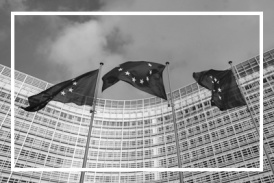Talk TikTok to me: 4 in 5 workers say social media influences how they communicate with colleagues

The Adaptavist Group
Research from The Adaptavist Group uncovers the extent of social media's influence on workplace dynamics, fueling conflict and misunderstanding
LONDON, UNITED KINGDOM, May 16, 2025 /EINPresswire.com/ -- Social media trends are reshaping how workers connect and collaborate with each other, according to research from The Adaptavist Group, a collection of diverse technology companies making businesses work better. The research revealed that platforms like TikTok and Instagram are directly influencing how 83% of people communicate professionally, fueling conflict and misunderstanding amongst an increasingly intergenerational workforce.
The findings, outlined in The Adaptavist Group's Workplace Communication Atlas, were based on a survey of 1,000 UK knowledge workers conducted by Attest.
The study also uncovered that younger generations – Gen Z and Millennials – were far more likely to be influenced by social media trends than the older generation (50+ year olds). More than half (54%) of over-50s in the workplace said that social media trends have no, or very little, impact at all on their use of language, compared to just over a third of Gen Z (36%) and 39% of Millennials. This highlights how personal usage of digital platforms is shaping communication styles differently across age groups, accelerating the adoption of new phrases or migrating meaning amongst younger generations.
Unsurprisingly, social media influence closely mirrors social media presence. For example, 22% of over-50s say they’re not on social media at all, compared to just 3% of Gen Z and 7% of Millennials. Even amongst users, platform preferences vary widely by generation: older users gravitate towards Facebook (39%), Millennials favour Instagram (32%), and Gen Z overwhelmingly prefer TikTok (42%). Overall, just one in 10 (11%) of all respondents still use X (formerly known as Twitter) or similar (such as BlueSky or Threads). As with any ecosystem, each of these platforms comes with language trends, idiosyncracies, and interaction styles that are unique to its space, driving further differences even amongst those who have the shared behaviour of using a social media platform.
Younger generations are also far more likely to use social media platforms and messaging apps for workplace communication. Messaging apps like WhatsApp are used regularly by 44% of Gen Z and 42% of Millennials, versus only 28% of Boomers. Nearly a third of Gen Z (29%) and Millennials (23%) consider social media, such as LinkedIn messaging, a go-to method for communicating, compared to just 11% of over-50s.
As workers increasingly bring their personal digital habits into the workplace, the risk of miscommunication and misunderstanding can grow. However, Adaptavist’s 2024 Digital Etiquette: Mind The Generational Gap Report found that 90% of global workers believe that the right tools can help close the intergenerational gap, indicating how properly implemented tools can improve communication between different cohorts.
Communication clashes in the TikTok age
Social media is also influencing how workers use emojis, interpret punctuation to convey tone, and set their expectations around response times. These differing viewpoints are further driving a communication divide across workplaces in the UK.
When it comes to emoji use, for example, over-50s are more likely to interpret emoji use as ‘inappropriate’, or even ‘lazy’ or ‘rude’. On the other hand, 25% of Gen Z and 19% of Millennials fully embrace emoji culture and are more likely to interpret its use as ‘friendly’.
Emoji use and social media-driven communication trends are also creating misjudgments at work. Almost one in three (29%) workers across all generations have encountered a misunderstanding at work related to emoji usage, and nearly half (46%) of all respondents cited ‘misinterpreting tone or phrasing’ as their biggest communication challenge in general, in the workplace.
46% of respondents also cited ‘differing response time expectations’ as their biggest communication challenge in the workplace. Over-50s tended to be slightly more patient: 72% said they would expect a response by the end of the day, compared to 77% of Gen Z and 74% of Millennials. A notable share of younger workers expect near-instant replies - 6% of Millennials and 5% of Gen Z - whereas half (2.6%) of over-50s said the same.
This shift in expectations may reflect broader digital behaviours: the rise of real-time social media updates, instant messaging, and 24/7 news cycles has conditioned younger generations to anticipate faster responses in all areas of communication, including the workplace.
Make way for new technologies…
Interestingly, almost one in 10 Gen Zers (9%) and 8% of Millennials use asynchronous video recordings, such as Atlassian’s Loom, as a primary method of communication. These types of communication platforms allow users to send and view videos and screen records, such as tutorials and walkthroughs, in their own time. These are notably high figures for a newer platform, potentially signalling the early stages of an emerging trend.
Simon Haighton-Williams, CEO of The Adaptavist Group, commented:
“Workplace communication will continue to evolve, influenced by emerging trends and the ways people engage with social media. Thus, businesses need to lean into these changes by embracing flexible, tech-forward communication strategies that cater to all preferences simultaneously, and embrace new technologies like asynchronous video recordings, such as Atlassian’s Loom.
“What’s more, with four generations in the workforce, enabling different communication preferences is essential to bridging generational gaps and ultimately building high performing teams. When supported by the right technology and environment, teams can apply soft skills, like emotional intelligence and adaptability, to help combat today’s digital communication productivity challenges.
ENDS
Notes to editors
Research conducted by Attest on behalf of The Adaptavist Group in February 2025. The research surveyed 1,000 UK knowledge workers.
About The Adaptavist Group
The Adaptavist Group is a collection of diverse companies with one common goal: to make business work better. We combine the best talent, technology, and processes to make it easier for our customers to excel–today and tomorrow.
We are experts at delivering innovative software, tailored solutions, and quality services across some of the world’s most trusted technology ecosystems, including Atlassian, AWS, monday.com, GitLab, and many more.
The Adaptavist Group exists to support clients’ day-to-day workflows, business transformation, and high-growth strategies. We offer a comprehensive but always evolving range of services across five key practices: agile, DevOps, work management, ITSM, and cloud. Our depth of knowledge across these practices unites us in our mission to help businesses embrace continuous transformation and make it their competitive advantage.
Sam Milligan
TFD Think Feel Do
adaptavist@wearetfd.com
Legal Disclaimer:
EIN Presswire provides this news content "as is" without warranty of any kind. We do not accept any responsibility or liability for the accuracy, content, images, videos, licenses, completeness, legality, or reliability of the information contained in this article. If you have any complaints or copyright issues related to this article, kindly contact the author above.
'Best Festival of the Year in the Middle East' Goes to Kayan Wellness Festival
ALM Cars Announces Major Inventory Expansion, Becoming the Largest Automotive Retailer in the Southeast
RST Cloud Brings Threat Intelligence from Blogs and Reports Straight into Your MISP
Kalendarium
Więcej ważnych informacji
 Jedynka Newserii
Jedynka Newserii

 Jedynka Newserii
Jedynka Newserii

Transport

Bezpieczeństwo stało się w UE tematem numer jeden. Miała w tym udział polska prezydencja
Ostatnie dni czerwca to dobra okazja do podsumowania pół roku prezydencji Polski w Radzie UE. Z tej okazji w Łodzi odbył się Wielki Piknik Europejski w Łodzi, w trakcie którego również wiceprzewodnicząca Parlamentu Europejskiego podsumowała ten okres: w ciągu ostatnich sześciu miesięcy Polska była silnym i odważnym przywódcą i również nam dała siłę i odwagę, aby kroczyć naprzód w tych bardzo trudnych czasach. Zdaniem europosła Dariusza Jońskiego Polsce udało się odbudować swoją pozycję na arenie międzynarodowej.
Polityka
Nie brakuje przeciwników zwiększenia wydatków na obronność do 5 proc. Obawiają się, że paradoksalnie zagrozi to bezpieczeństwu Europy

W Hadze rusza szczyt NATO. Jednym z ważniejszych punktów ma być podwyższenie wydatków państw sojuszniczych na zbrojenia i obronność do 5 proc. PKB. Jeśli wniosek zostanie zatwierdzony, państwa członkowskie przeznaczą łącznie na ten cel ponad 500 mld euro więcej rocznie. – Zwiększając wydatki na broń, nie tworzy się warunków do pokoju. Dlatego jesteśmy temu zdecydowanie przeciwni – podkreśla włoski europoseł Pasquale Tridico z Ruchu Pięciu Gwiazd (M5S).
Ochrona środowiska
Gospodarowanie odpadami nieodłącznym elementem strategii firm. Brak jasnych przepisów utrudnia ich działania

Odpowiedzialne gospodarowanie odpadami stanowi integralną część biznesu, a działania w tym obszarze coraz częściej wchodzą w skład strategii ESG. Opóźniające się wdrożenie systemu rozszerzonej odpowiedzialności producenta (ROP) zgodnego z wymogami Unii Europejskiej stawia jednak przed polskimi przedsiębiorstwami wiele wyzwań.
Partner serwisu
Szkolenia

Akademia Newserii
Akademia Newserii to projekt, w ramach którego najlepsi polscy dziennikarze biznesowi, giełdowi oraz lifestylowi, a także szkoleniowcy z wieloletnim doświadczeniem dzielą się swoją wiedzą nt. pracy z mediami.








.gif)

 |
| |
| |
|